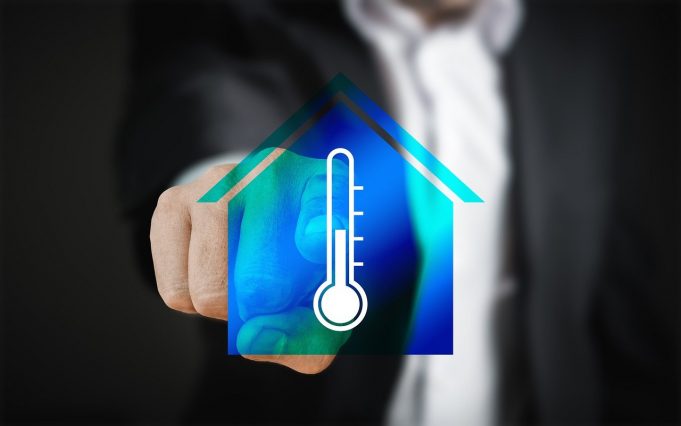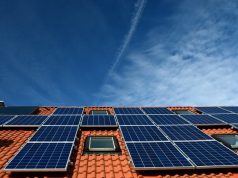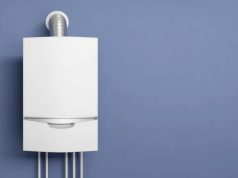The UK has pledged to become carbon neutral by 2050. For this to happen, it needs to meet significant milestones in 2030 and 2040. Switching to electric heating, particularly smart electric heating is a vital goal. The good news is that the benefits to the planet are matched by the benefits to your wallet.
To explain further, David Tyrer, Director of Rio Heating shares his insight into what you need to know about smart heating and reducing your carbon footprint.
Electricity is flexible
When it comes to cooking, especially on a hob, there’s still a case for using gas. Many cooks love the fact that gas hobs respond instantly to the slightest change. That said, other hob types are quickly catching up. Heating a building, however, is very different.
As technology currently stands, you can’t just flick a switch and heat a large area such as even a small room. If you let a building get too cold, you need to start by heating a small area and then wait for the heat to spread. Of course, you generally want to avoid that. It’s fine to have buildings cool down when you’re out of them but only to a certain extent.
Instead, what you want is to have your heating maintain your specified temperature. That means using extra power when you need it and less power when you don’t. This is where electricity wins hugely over gas. It can be coupled with smart technology for the ultimate in flexibility and control.
You can switch energy sources
As gas is a fossil fuel, it ultimately all comes from the same source. Deposits of natural gas may be found in different parts of the world. It may be delivered to consumers in slightly different ways. Ultimately, however, it’s essentially one fuel with one source.
Electricity, by contrast, can be, and increasingly is, generated from several different sources. Increasingly these sources are renewable. That creates a lot of interesting options at both commercial and consumer levels. In the UK overall, for example, electricity from coal-fired power stations is being phased out and replaced with electricity from clean sources.
Most of this change is happening at the macro level as commercial providers shift to clean energy sources, particularly renewable ones. The government is, however, encouraging homeowners to become energy microproducers. This reduces the demand on the National Grid and reduces homeowners’ energy bills.
At present, relatively few homeowners are likely to be able to power their entire homes from the renewable energy they produce themselves. If they do, they’re probably going to need to use a couple of sources, for example, heat pumps and solar. Even then, they’re probably going to want to have an on-grid connection as a backup.
With traditional heating, this could all become a bit of a challenge to manage. With smart heating, by contrast, you can keep your home at just the right temperature with minimal oversight. To lower your carbon footprint (and costs) even further, you can use smart devices to run other functions in your home, for example, lighting.
Smart heating promotes efficiency
The headline benefit of smart heating is that it lowers costs and increases convenience. It does both of these by improving efficiency. The underlying concept of using smart heating is much the same as the underlying concept behind fuel-efficient driving (or energy-conservation in nature).
Essentially, with smart heating, your heating adjusts itself to keep your home at a consistent temperature. You can vary this temperature according to the situation. For example, when you go out, you might choose to let your home cool down a bit. Such changes should, however, be planned mindfully rather than just coming about as a result of circumstances.
By minimizing the number and extent of changes, you minimize the amount of energy used to make those changes. For example, you’re not going to need to blast your home with heat to warm it up quickly. Firstly, it’s not going to get excessively cold. Secondly, you can set your heating to warm up your home before you get back to it.
Smart heating can be controlled remotely
There’s a lot to be said for automation. It can make life a whole lot more convenient. At the same time, automation has its limits. Sometimes you want a manual override. Ideally, you want to be able to apply that manual override wherever you are. With smart heating, you can do just that.
This means that if your schedule changes, you can update your heating settings accordingly no matter where you are. You don’t even need access to WiFi. Your mobile data will do just fine.
Smart heating improves on standard energy-saving measures
Most smart-heating systems will give you detailed statistics about your energy usage. These can give you a lot of useful information about how well you are doing at general energy conservation. They can actually come up with some surprising revelations.
For example, you may already have been aware that windows are often a prime source of heat loss. You may not, however, have realised just what that meant in practice in your home. The good news is that there is often scope for making budget-friendly updates, at least as mid-term stopgap measures. These can help save the money you can then put towards longer-term updates.
In the case of windows, typical short- to mid-term measures can be as simple as making sure that the glass is really firm in the frame. Then add extra insulation such as longer and thicker curtains. When you’re ready, then consider upgrading your windows to more energy-efficient ones and then add the extra insulation on top.
Having accurate statistics on your energy usage can also help a lot with budgeting. This is particularly true when it comes to heating as this generally accounts for a large portion of a home’s energy use.
You want to avoid being caught short of funds when the weather is at its worst. At the same time you also usually want to avoid budgeting too much money for energy you’re not going to need. Even though you’ll be able to release these funds in spring, you may find you’d rather have access to them in winter, especially in the post-Christmas period when money is often tight.














